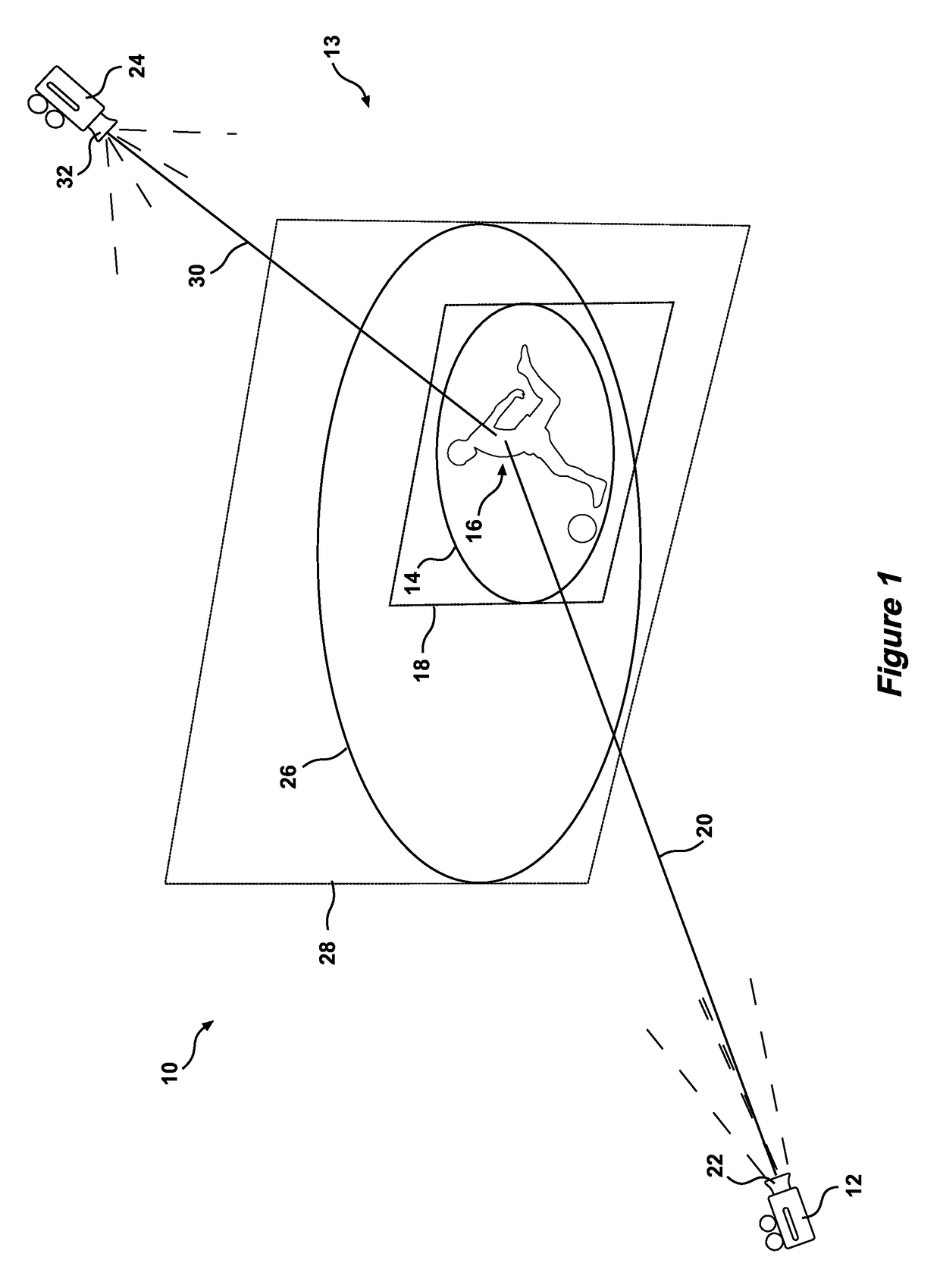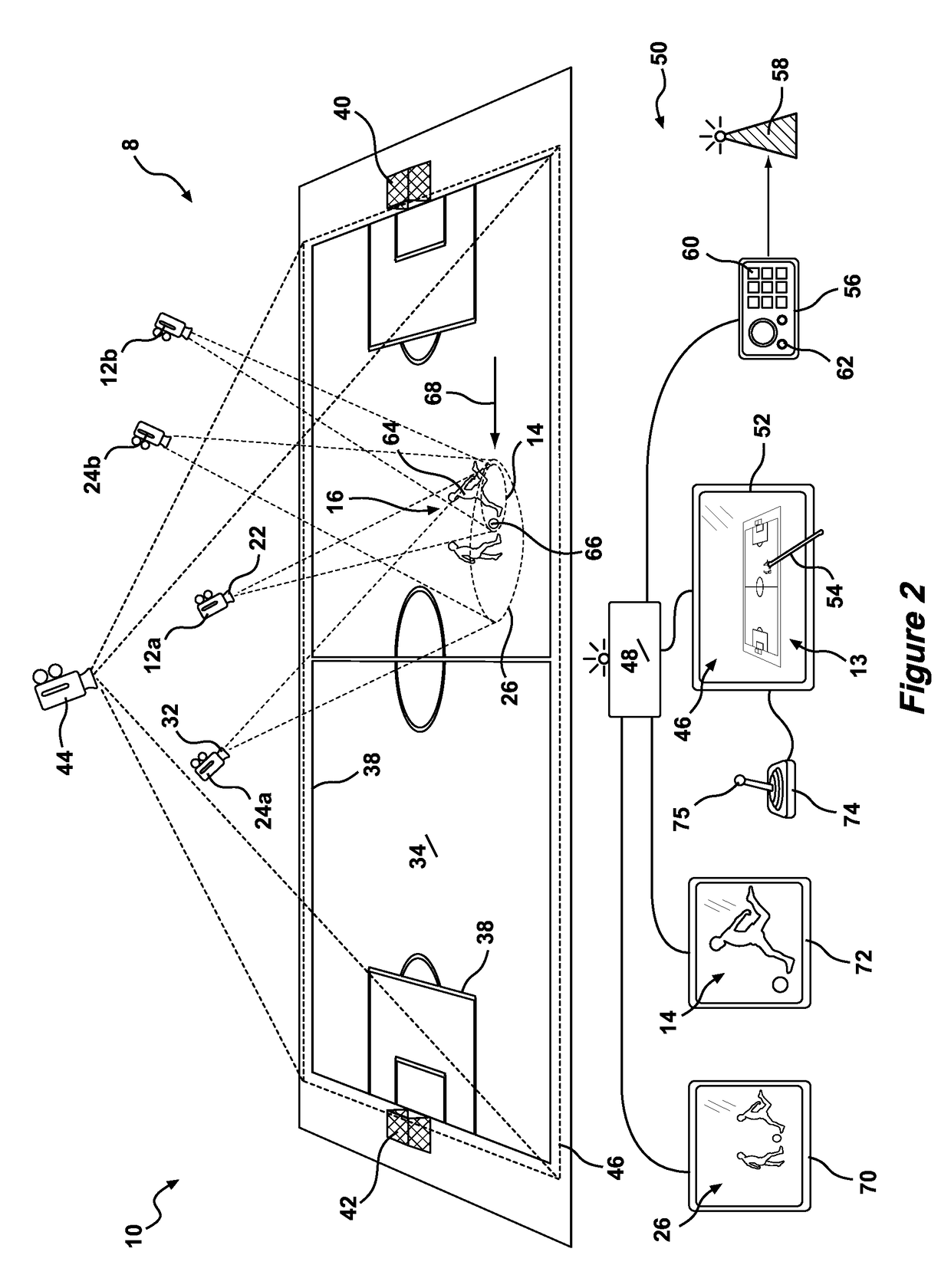Method and apparatus for relative control of multiple cameras using at least one bias zone
a technology of bias zone and relative control, which is applied in the field of camera control systems, can solve the problems of obscuring the view of camera operators, limiting the cost of placing a skilled camera operator behind each camera, and restricting the placement of cameras around the perimeter of the playing field
- Summary
- Abstract
- Description
- Claims
- Application Information
AI Technical Summary
Benefits of technology
Problems solved by technology
Method used
Image
Examples
Embodiment Construction
[0084]There are numerous specific details set forth in the following description. However, from the disclosure, it will be apparent to those skilled in the art that modifications and / or substitutions may be made without departing from the scope and spirit of the invention. In some circumstance specific details may have been omitted so as not to obscure the invention. Similar reference characters indicate corresponding parts throughout the drawings.
[0085]Referring to the drawings for a more detailed description, a motion picture capturing apparatus 10 is illustrated, demonstrating by way of examples arrangements in which the principles of the present invention may be employed. As illustrated in FIG. 1, the motion picture capturing apparatus includes a first camera 12 for capturing a dynamic primary image 14 of an object 16, the primary image 14 being defined by the field of view 18 and subject distance 20 of the lens 22 of the first camera 12. The apparatus 10 further including a sec...
PUM
 Login to View More
Login to View More Abstract
Description
Claims
Application Information
 Login to View More
Login to View More - Generate Ideas
- Intellectual Property
- Life Sciences
- Materials
- Tech Scout
- Unparalleled Data Quality
- Higher Quality Content
- 60% Fewer Hallucinations
Browse by: Latest US Patents, China's latest patents, Technical Efficacy Thesaurus, Application Domain, Technology Topic, Popular Technical Reports.
© 2025 PatSnap. All rights reserved.Legal|Privacy policy|Modern Slavery Act Transparency Statement|Sitemap|About US| Contact US: help@patsnap.com



